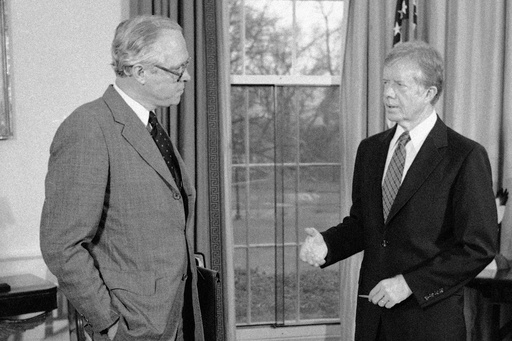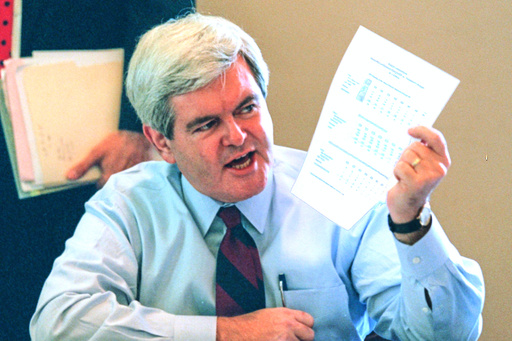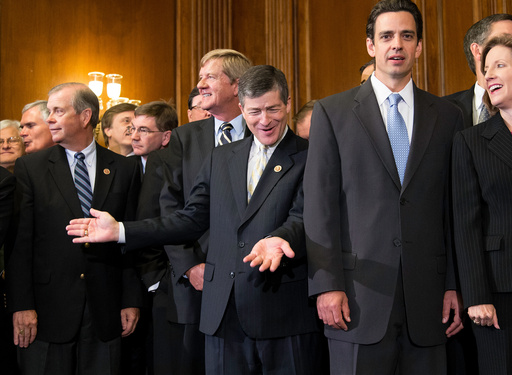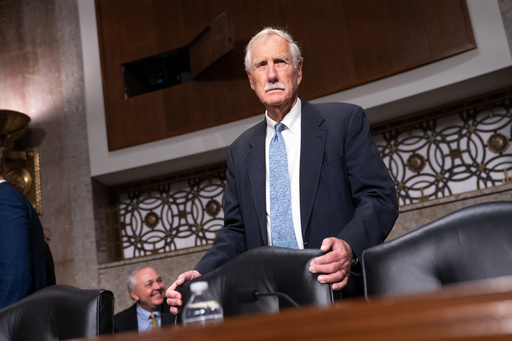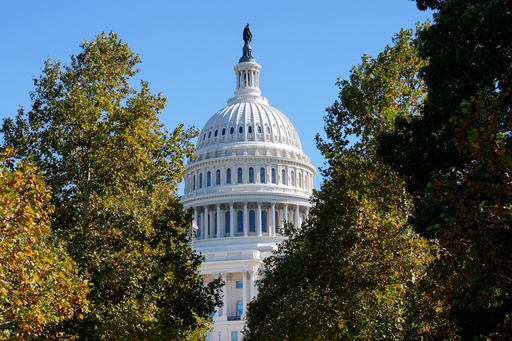Shutdowns began as a way to enforce federal law. Now Trump is using it to take more power
News > Politics & Government News

Audio By Carbonatix
6:14 AM on Saturday, October 25
By STEPHEN GROVES
WASHINGTON (AP) — The government shutdown, already the second-longest in history, with no end in sight, is quickly becoming a way for President Donald Trump to exercise new command over the government.
It wasn't always this way. In fact, it all started with an attempt to tighten Washington’s observance of federal law.
The modern phenomena of the U.S. government closing down services began in 1980 with a series of legal opinions from Attorney General Benjamin Civiletti, who was serving under Democratic President Jimmy Carter. Civiletti reached into the Antideficiency Act of 1870 to argue that the law was “plain and unambiguous” in restricting the government from spending money once authority from Congress expires.
In this shutdown, however, the Republican president has used the funding lapse to punish Democrats, tried to lay off thousands of federal workers and seized on the vacuum left by Congress to reconfigure the federal budget for his priorities.
“I can’t believe the Radical Left Democrats gave me this unprecedented opportunity," Trump posted on his social media platform at the outset of the shutdown.
Democrats have only dug into their positions.
It's all making this fight that much harder to resolve and potentially redefining how Washington will approach funding lapses altogether.
In the post-Watergate years, Civiletti's tenure at the Department of Justice was defined by an effort to restore public trust in Washington, sometimes with strict interpretations of federal law.
When a conflict between Congress and the Federal Trade Commission led to a delay in funding legislation for the agency, Civiletti issued his opinion, later following it up with another opinion that allowed the government to perform essential services.
He did not know that it would set the groundwork for some of the most defining political battles to come.
“I couldn’t have ever imagined these shutdowns would last this long of a time and would be used as a political gambit,” Civiletti, who died in 2022, told The Washington Post six years ago.
For the next 15 years, there were no lengthy government shutdowns. In 1994, Republicans retook Congress under House Speaker Newt Gingrich of Georgia and pledged to overhaul Washington. Their most dramatic standoffs with Democratic President Bill Clinton were over government shutdowns.
Historians mostly agree the shutdowns did not work, and Clinton was able to win reelection in part by showing he stood up to Gingrich.
“The Republicans in the Gingrich-era, they do get some kind of limited policy victories, but for them overall it's really kind of a failure,” said Mike Davis, adjunct professor of history at Lees-McRae College.
There was one more significant shutdown in 2013 when tea party Republicans sparred with Democratic President Barack Obama. But it was not until Trump's first term that Democrats adopted the tactic of extended government shutdowns.
During previous funding lapses, presidential administrations applied the rules governing shutdowns equally to affected agencies.
“A shutdown was supposed to close the same things under Reagan as under Clinton,” said Charles Tiefer, a former acting general counsel for the House and a professor emeritus at the University of Baltimore School of Law. He said that in this shutdown, the Trump administration has used “a kind of freewheeling presidential appropriation power, which is contrary to the whole system, the original Constitution, and the Antideficiency Act.”
The administration has introduced a distinctly political edge to the funding fight, with agencies updating their websites to include statements blaming Democrats for the shutdown. The Department of Defense has tapped research and development funds to pay active-duty service members. Trump has tried to initiate layoffs for more than 4,000 federal employees who are mostly working in areas perceived to be Democratic priorities.
During a luncheon at the White House with GOP senators this week, Trump introduced his budget director Russ Vought as “Darth Vader” and bragged how he is “cutting Democrat priorities and they're never going to get them back."
Democrats have only been emboldened by the strategy, voting repeatedly against a Republican-backed bill to reopen the government. They argue that voters will ultimately hold Republicans accountable for the pain of the shutdown because the GOP holds power in Washington.
Democrats are confident they have chosen a winning policy demand on health care plans offered under Affordable Care Act marketplaces, but there is an undercurrent that they are also fighting to halt Trump's expansion of presidential power.
Sen. Tim Kaine, D-Va., acknowledged that his state has more to lose than perhaps any other due to the large number of federal employees and activity based there. But he argued that his constituents are fed up with a “nonstop punishment parade” from Trump that has included layoffs, cancellation of money for economic development projects, pressure campaigns against universities and the dismissal of the U.S. attorney for Virginia.
“It kind of stiffens folks' spines,” Kaine said.
Democratic resolve will be tested in the coming week. Federal employees, including lawmakers' own staff, have now gone almost an entire month without full paychecks. Supplemental Nutrition Assistance Program, or SNAP, which helps about 1 in 8 Americans buy groceries, faces a potential funding cliff on Nov. 1. Air travel delays threaten to only grow worse amid air traffic controller shortages.
Sen. Angus King, I-Maine, said he hopes his colleagues start negotiating quickly to end the impasse.
He said he's been one of the few members of the Democratic caucus to vote for ending the shutdown because “it empowers the president beyond what he would be able to do otherwise, and it damages the country.”
